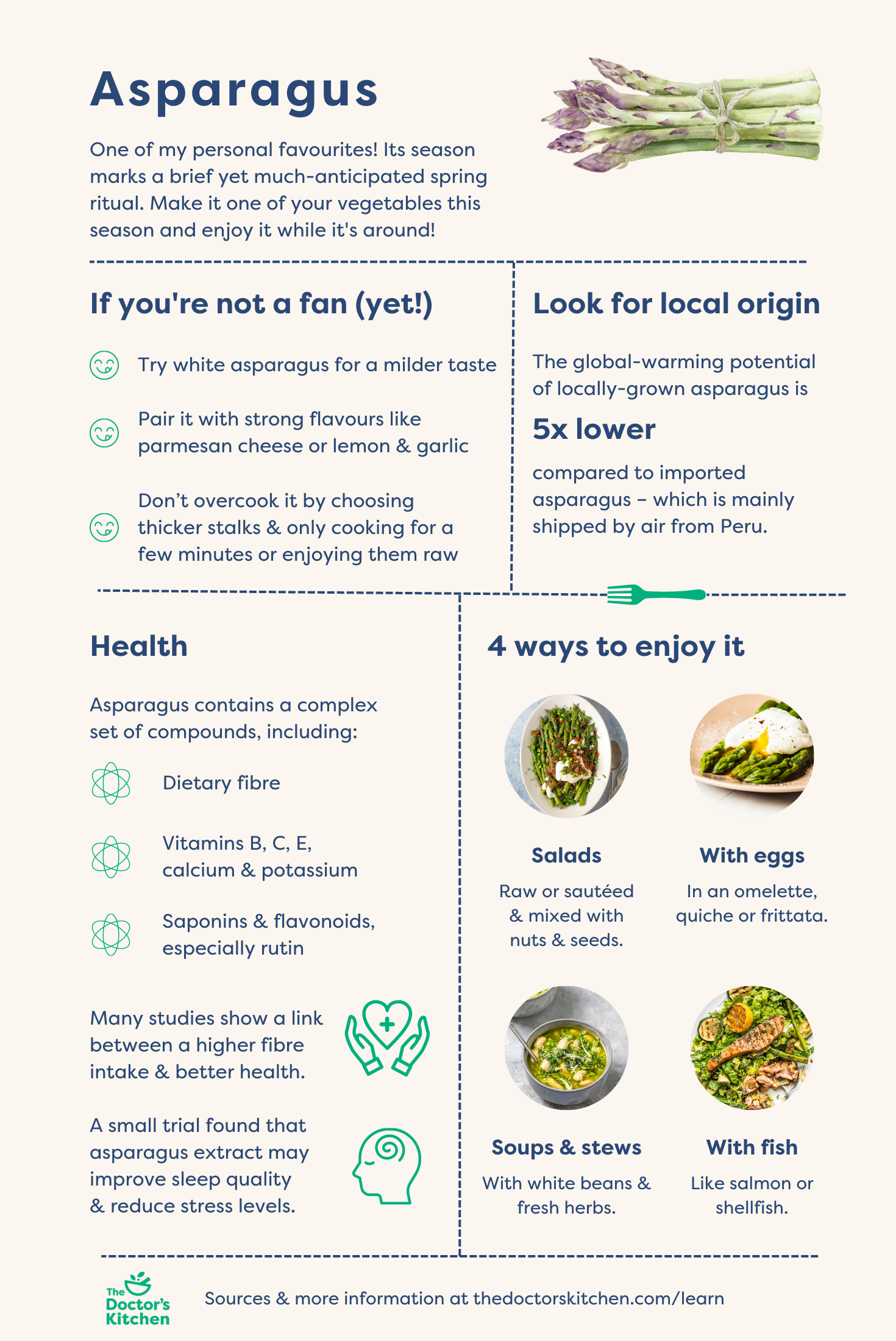

article
by Dr Rupy Aujla18 Apr 2023


Save it on Pinterest or download it here.
Why so short? In the UK, asparagus season runs from the end of April to Summer Solstice on June 21st. The spears grow rapidly, using a huge amount of energy which can only be sustained for a few weeks. Farmers stop harvesting when spears start to thin out to preserve energy for the next growing season.
White gold: Have you ever tried white asparagus? It’s a slightly sweeter version of asparagus that is grown underground to prevent chlorophyll from developing and turning the spears green. Germany has a special affection for it, where it’s known as “white gold” and celebrated each year with Spargel festivals.
Origin story: Its cultivation dates back to the Romans over 2,000 years ago. It’s said that the emperor Augustus had dedicated ships called Asparagus Fleets for transporting asparagus around the empire! The word Asparagus originates from the Persian “asparag”, meaning sprout or shoot.
Traditional uses: The vegetable we know is garden asparagus (Asparagus officinalis). But the genus Asparagus contains up to 300 species. Some are used in traditional herbal medicine to aid digestion and treat pneumonia, like Chinese asparagus (Asparagus cochinchinensis).
Beyond its delicate flavour, adding asparagus to your plate may…
Asparagus is a source of…
.png)
How does it work? Together, these compounds show beneficial effects in lab models like improving the composition of the gut microbiota, modulating the immune system and improving antioxidant capacity. (Guo et al. 2020)
How much? A portion of asparagus is 80g or about 5 spears.
Buy it fresh: Locally-grown asparagus is more flavourful and lowers the global warming potential by almost 5x compared to imported asparagus. Find UK farm shops here.
Skip the organic section: Asparagus doesn’t carry much of a pesticide load as it emerges from the ground and grows quickly. It’s often cited as one of the foods with the lowest amounts of pesticide residues in the US, according to the Environmental Working Group.
If you’re not a fan (yet)
We enjoy it…
Human studies: Ito et al. 2014 - Aune et al. 2017 - Fu et al. 2022 - Veronese et al. 2018
History, compounds & biological activities: Redondo-Cuenca et al. 2023. - Iqbal et al. 2017
Environment: Frankowska et al. 2019 - The University of Arkansas System Division of Agriculture





Sign up to our newsletter and receive a free copy of our breakfast, lunch and dinner plan to kick start your healthy eating.